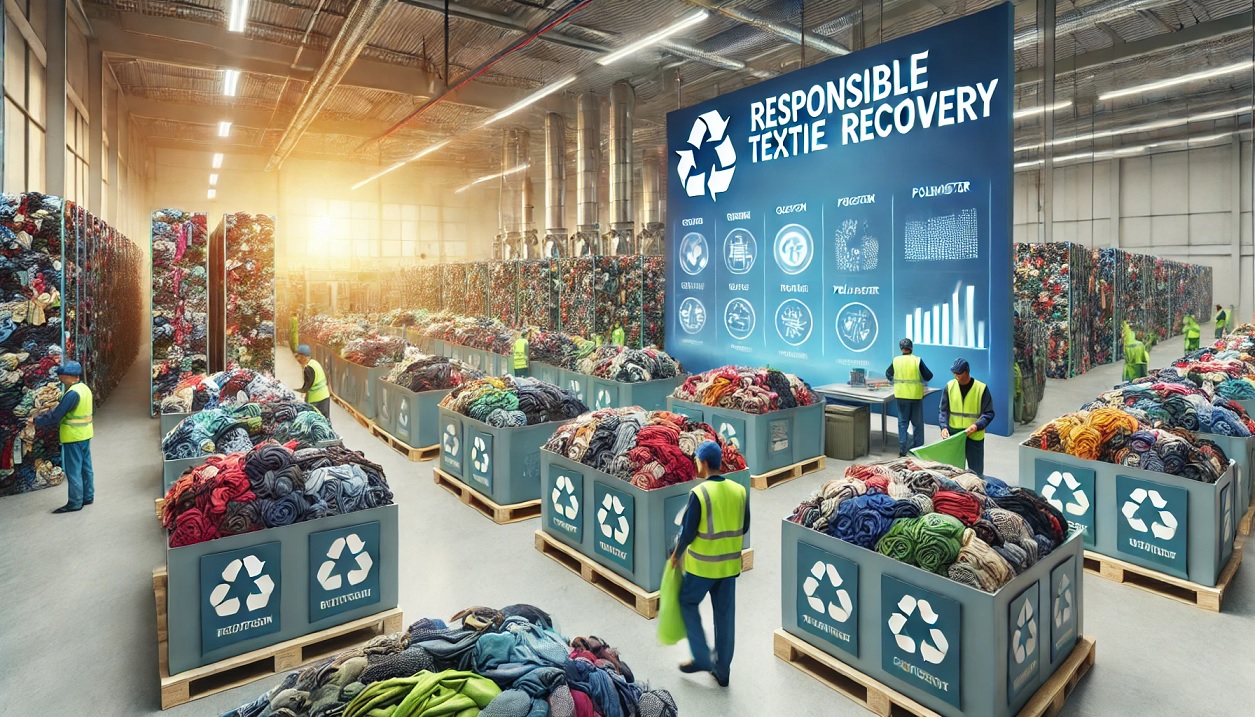The Responsible Textile Recovery Act of 2024 (SB 707) is a groundbreaking piece of legislation passed in California to combat the growing environmental impact of textile waste. It introduces an Extended Producer Responsibility (EPR) program, requiring apparel and textile producers to manage the lifecycle of their products, from creation to disposal.
This ultimate guide breaks down everything you need to know, including its background, key provisions, benefits, challenges, and actionable steps for stakeholders.
Why SB 707 Was Introduced
Textile waste is a major contributor to landfill overflow and environmental pollution. In the U.S. alone, over 11 million tons of textiles are discarded annually, with less than 15% being recycled. The Act addresses this problem by holding producers accountable for the disposal, repair, and recycling of their products, aiming to:
- Reduce landfill waste.
- Promote sustainable production practices.
- Support a circular economy in the fashion and textile industries.
Key Provisions of SB 707
1. Establishment of Producer Responsibility Organizations (PROs)
By July 1, 2026, all producers of apparel and textiles sold in California must:
- Join or form a Producer Responsibility Organization (PRO).
- Submit plans to CalRecycle detailing strategies for collection, repair, reuse, and recycling.
2. Implementation Timeline
- 2026: PRO formation deadline.
- 2028: CalRecycle begins enforcing regulations.
- 2030: Full compliance required for producers.
3. Funding Mechanisms
Producers will finance the recovery and recycling programs through fees or other contributions, ensuring the program’s sustainability without relying on taxpayer dollars.
4. Penalties for Non-Compliance
Producers who fail to join a PRO or comply with regulations may face:
- Fines up to $10,000 per day for non-compliance.
- Escalated penalties of $50,000 per day for intentional violations.
How SB 707 Works
Extended Producer Responsibility (EPR)
EPR shifts the burden of waste management from consumers and local governments to producers. Companies are now responsible for:
- Designing products with recyclability in mind.
- Implementing systems for product take-back, repair, and recycling.
- Educating consumers about proper textile disposal.
Role of CalRecycle
California’s Department of Resources Recycling and Recovery (CalRecycle) oversees the program by:
- Approving PRO plans.
- Monitoring compliance.
- Imposing penalties for violations.
Benefits of SB 707
- Environmental Impact:
- Reduced textile waste in landfills.
- Decreased greenhouse gas emissions from textile production and disposal.
- Economic Opportunities:
- Growth in recycling and repair industries.
- Job creation in textile recovery programs.
- Consumer Empowerment:
- Easier access to repair and recycling programs.
- Encouragement to purchase sustainable products.
- Industry Accountability:
- Incentivizes producers to adopt eco-friendly practices.
- Promotes innovation in sustainable textiles.
Challenges and Considerations
1. High Initial Costs
Setting up recycling programs and adjusting manufacturing practices may increase costs for producers, potentially raising prices for consumers.
2. Industry Resistance
Some businesses may resist the added responsibilities, especially smaller producers with limited resources.
3. Consumer Participation
Success depends on consumer engagement in recycling and repair programs, which requires education and behavioral change.
4. Enforcement Complexity
CalRecycle will face challenges in monitoring compliance, especially from online sellers and international producers.
Actionable Steps for Stakeholders
For Producers
- Assess Your Obligations: Determine if your products fall under the Act’s scope.
- Join or Form a PRO: Collaborate with industry peers to create a compliance plan.
- Invest in Sustainable Practices: Redesign products for durability, repairability, and recyclability.
For Online Marketplaces
- Monitor Sellers: Identify third-party sellers subject to the Act.
- Notify and Educate: Inform sellers about their obligations under SB 707.
For Consumers
- Choose Sustainable Brands: Support companies that prioritize eco-friendly practices.
- Recycle Textiles: Participate in collection and recycling programs introduced by PROs.
- Reduce and Reuse: Repair and repurpose old clothes before discarding them.
FAQs About SB 707
1. What products are covered under SB 707?
The Act applies to apparel and textiles, including clothing, accessories, and household items like linens and towels.
2. Does SB 707 apply to secondhand goods?
No, secondhand goods sold through thrift stores and charitable organizations are exempt.
3. How will the Act affect product prices?
While costs may rise initially, producers are incentivized to reduce waste and improve efficiency, which could lower long-term costs.
4. What happens to non-compliant companies?
Non-compliant producers face daily fines and possible restrictions on selling products in California.
Conclusion: A Step Toward a Greener Future
The Responsible Textile Recovery Act of 2024 is a bold move to tackle textile waste and promote sustainability in fashion. By holding producers accountable, California is leading the way in creating a circular economy for textiles. While challenges remain, this legislation sets a powerful precedent for other states and industries.
Stakeholders—from producers to consumers—must work together to ensure its success. With collective action, SB 707 can transform how we produce, use, and dispose of textiles, paving the way for a more sustainable future.
Take Action Now:
Producers, start preparing for compliance. Consumers, choose eco-friendly options. Together, we can make a difference.



